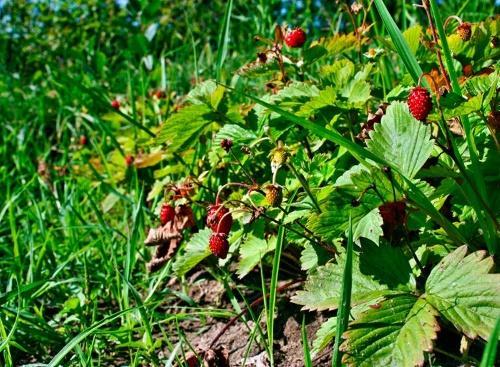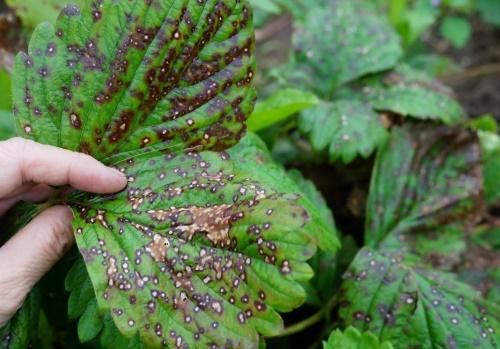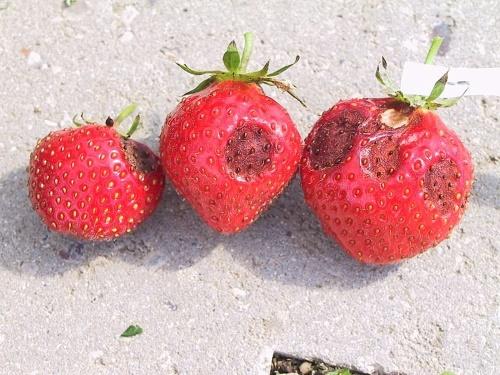Strawberry anthracnose is a dangerous quarantine disease
 Previously, strawberry anthracnose was a rare phenomenon in the vastness of our homeland. However, recently, due to the increase in the number of imported seedlings, cases of its manifestation are increasingly common. Italy, Finland and Poland are the main suppliers of planting material. It is from there that the bushes infected with anthracnose get to us. The trouble is that at the initial stage of the disease it is almost impossible to detect it. The fungus develops latently, but soon quickly infects the entire plant. If you do not take action, strawberries completely disappear, and even can cause the spread of the disease to other crops.
Previously, strawberry anthracnose was a rare phenomenon in the vastness of our homeland. However, recently, due to the increase in the number of imported seedlings, cases of its manifestation are increasingly common. Italy, Finland and Poland are the main suppliers of planting material. It is from there that the bushes infected with anthracnose get to us. The trouble is that at the initial stage of the disease it is almost impossible to detect it. The fungus develops latently, but soon quickly infects the entire plant. If you do not take action, strawberries completely disappear, and even can cause the spread of the disease to other crops.
This fungal disease is also called escoriasis or black spot.
Strawberry anthracnose - symptoms of the disease

- Small brownish-red spots with a dark oblong rim appear on the petioles and antennae. They are slightly depressed, like ulcers. Over time, the spot grows and rings the antennae or petiole, blocking the access of food. As a result, they dry up.
- The leaves are covered with a scattering of small light brown dots. They quickly grow in size and merge, becoming black. The foliage withers and dies off.
- Then the disease spreads to the ovary, and the flowers become, as it were, burnt.
- Gradually, anthracnose gets to the fruit. The cups are discolored, and brown, dry or wet, depressed brown spots appear on green berries. Ripe strawberries also have depressed blackish spots with a dark edging. The achenes themselves also darken. In dry weather, the fruits are mummified, if wet, they rot.
- Horns and root are the last to die, turning brown and drying out.

A wilted bush is more like a plant affected by late blight. A simple method will help to make sure that strawberries are sick with anthracnose. Cut off the stained leaf, put it in a damp jar with a lid, and leave it warm for 3 days. If after this time the leaf is covered with an orange-yellow mold, this is definitely anthracnose.
How to save strawberries from anthracnose
 To prevent the appearance of fungus, purchase planting material only in a trusted place. It is better not to order from other countries. Before planting, soak the seedlings in a pale pink potassium permanganate solution. Do not "frequent" with plantings, leave enough distance between the bushes. Instead of a film, it is advisable to mulch the beds with straw.Spray the strawberries with fungicides to reduce the risk of disease. Horus is suitable, and you need to have time to process the planting with it from the beginning of flowering and before the berries begin to grow, up to 4 times.
To prevent the appearance of fungus, purchase planting material only in a trusted place. It is better not to order from other countries. Before planting, soak the seedlings in a pale pink potassium permanganate solution. Do not "frequent" with plantings, leave enough distance between the bushes. Instead of a film, it is advisable to mulch the beds with straw.Spray the strawberries with fungicides to reduce the risk of disease. Horus is suitable, and you need to have time to process the planting with it from the beginning of flowering and before the berries begin to grow, up to 4 times.
In the initial stages of anthracnose, you can try folk remedies. Spray plants at least 3 times per season with iodine or garlic infusion.
In case of massive defeat, you will have to resort to chemistry. Works well against anthracnose Speed, Previkur Energy, Kuproksat, Oxyhom. However, keep in mind that fungicides can only be treated before flowering.